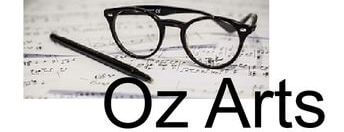Stabat Mater (Pergolesi)
Jane Davidson (dir.)
UWA School of Music
Winthrop Hall
reviewed by Neville Cohn
In many years of attending concerts at Eastertide, I cannot recall a performance as powerfully communicative as Jane Davidson’s production of Pergolesi’s Stabat Mater. Her sure feel for what works in theatrical terms brought both music and play into vivid perspective.
Presented in the style of a Passion play, it featured an eleven-strong cast of women, all dressed in drab, russet shades, except for Mary who wore a pale blue sash over her garment. The women sang, often beautifully, the anguish of Cavalry reflected both in facial expression and choreographed movement.
Davidson’s directorial touch, otherwise sure and experienced, wavered briefly towards the close of the work when the corps, dancing ring-a-roses-style around the risen, smiling Christ bordered on the twee in visual terms. Its antithesis was David Jones’ first appearance as Jesus, almost buckling under the weight of the cross as he staggered towards the stage along the hall’s centre aisle in the company of two guards who were made up to appear the apotheosis of brutality and coarseness. And Jesus’ agonies groans as his hands and feet were nailed to the cross was an horrific counterpoint to the accompanying music.
Earlier, we heard Nicole Jordan and Filipa La in stark and sober black as soloists in Monteverdi’s Cantate Domino, their finely sung lines quite overshadowed by aerial artist Theaker von Ziarno who, clad in a white body stocking, made a sensational entrance from an opening in the ceiling, twisting and turning her slow way down two lengths of white cloth which reached to the floor. She returned towards the end of the program as the closing measures of Schutz’s Es steh Gott auf were sung, again by Jordan and La.
Paul Wright led an instrumental ensemble with his usual disciplined artistry although positioning the players to one side of the hall may have been the main factor robbing instrumental sound of some of its bloom. As ever, Stewart Smith was discreet and musicianly at both harpsichord and organ.
In passing: I imagine I’m speaking for many in saying that, having for years endured Winthrop Hall’s uncomfortable seating, the new arrangements are very much a change for the better. Certainly, it will ensure that attending concerts there will be as comfortable for rears as ears.
Copyright 2006 Neville Cohn

